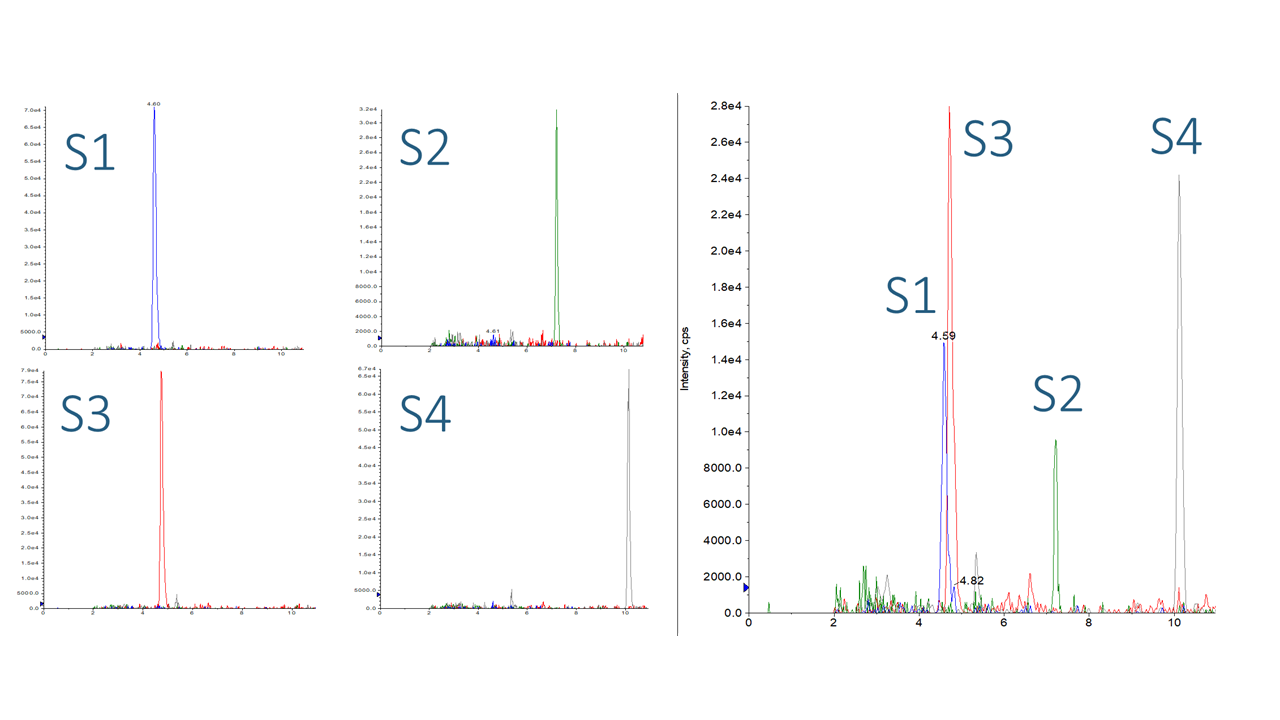Vaccines contain pathogenic-based compounds, called antigens, used to generate an immune response once inoculated in the aim to protect against pathogens. Since the first ones, their formulation evolved from monovalent to polyvalent, involving several antigens from different origin, thus the need to develop new analytical methods to control their production appeared.
Boehringer Ingelheim develops tetravalent vaccines with 4 similar protein antigens produced in 4 different strains. The formulation of such vaccine lays in the ratio between the 4 proteins. Since these proteins have high homology, quality control analysis has to be able to differentiate the 4 proteins to monitor vaccine formulation and production consistency. Due to the potential cross-reactivity involved with generic immunoassay-based techniques, LC-MS has the ability to specifically detect the homologous antigens.
Following an enzymatic digestion of the samples, each protein from their respective strain has been detected thanks to their respective unique signature peptide. The figure below shows the detection specificity. On the left hand side, chromatograms present samples after production; only 1 antigen is detected in each strain without any interference. On the right hand side, after formulation, the 4 homologous antigens are mixed with adjuvants and each protein is specifically detected, even after the final formulation.

Thanks to this method development, scientists could be able to:
- Confirm antigens ratio after formulation
- Quantitate individual antigens after formulation
- Perform batch to batch comparisons
- Monitor the bioproduction
- Support the Critical Quality Attributes (CQA)
 Anaquant HCP analysis I Protein characterisation I Protein analysis
Anaquant HCP analysis I Protein characterisation I Protein analysis